24 Hours with Jack Bauer.
Or unbuilding a mystery;
inside the Rolex factories.
Part II
James Dowling
Churchill once described the Soviet Union as a riddle inside a mystery wrapped in an enigma and that is many peoples’ perception of Rolex. They are a very private company (in every sense of the word) and rarely make any comment, preferring to let their products speak for themselves. This vacuum has resulted in many people creating not only myths around the company, but also ascribing Machiavellian intents to perfectly normal actions. I have to confess that sometimes these theories even cross MY mind. So it was, one morning last summer when the vehicle taking me to visit one of the company’s new factories stopped briefly at a traffic light on the way out of Geneva. Right next to the traffic light was a Victorian building, now obviously empty; there was nothing out of the ordinary about it, other than the rather temporary looking white cardboard sign above the door, it proclaimed that the ex residents to have been ‘Rolex SA’.
The building used to house Beyeler, a dial manufacturer who had been in business for over a hundred years and who were purchased by Rolex in 1997 and who finally moved out of this building recently to the new factory at Chéne-Bourg
It was this purchase and consolidation of many different smaller suppliers into three giant manufacturing complexes that Rolex wanted to display to the press and, as such, was the reason for my invitation.
Buying their suppliers was not something new for Rolex, over the years they had bought many companies, ranging from case makers to makers of artificial sapphire, but most of them remained in their original locations using their original machinery, in some cases this machinery was older than Rolex, a company celebrating its centenary this year. This old machinery and locations inhibited innovation and made it difficult to change, so it was decided around a dozen years ago to start from a ‘clean sheet’ and build brand new manufacturing facilities that would not only be capable of containing the planned developments but would also have the ability to accommodate any future expansion.
The new factories were located in four locations, three sites around Geneva, two ‘green field’ sites and also on the current Rue Dassaud corporate headquarters site, which also underwent massive expansion. Beyeler’s previous dial operation and all jewel setting for cases, bracelets and dials is undertaken at Chéne-Bourg; whilst assembly and casing of movements and production of the 41XX movements takes place at Rue Dassaud. All other movements were still made in Bienne in another new factory, which replaced the old Aegler factory, this factory (in fact) predated the formation of Rolex by several decades. The purchase of the Aegler/Borer family’s majority shares in Bienne was the latest, largest and most important supplier purchase that Rolex have ever done.
The remaining and largest of the three sites was in the Geneva suburb of Plain les Ouates, also currently home to Patek Philippe, Vacheron et Constantin, Piaget, and half a dozen other manufacturers; this concentration of so many watchmakers in such a small area has produced the local nickname of ‘Plan les Watches’ for the locale. It was this site that was the first I visited, and one is immediately overwhelmed by the sheer size of the Rolex building, it is essentially a ‘T’ shaped structure, seemingly rising 6 stories from the old cornfields. In fact, this is an eleven-storey building with 5 of the floors underground, forming a ginormous subterranean vault with over 60,000 storage compartments. The compartments are accessed via a computerised retrieval system with robotised 12 meter (almost 40ft) frames which whiz along the length of the building, from which retractable arms shoot out, clamp on the required compartment and send it to the correct department, all without any visible human intervention. I was able to see all this action through a double thick reinforced glass wall, which is the nearest anyone gets to these vital components, access to this viewing area is through a massive safe door, which can only be opened by one of a small number of employees whose retinal scan is held in the system. Not even Danny Ocean’s team could get in here.

This level of security is needed when you realise that held within this vault are cases and bracelets in various stages of completion, many of them made of gold or platinum (to say nothing of the movements). The value of these holdings can only be envisaged, but two simple facts should give you an idea. Rolex is the largest non-governmental user of gold in the world, when I asked Jaques Baur (head of R&D at Rolex) if he knew how much gold Rolex used annually, he smiled conspiratorially and replied ‘Yes, I do’ and changed the subject. The simple facts are that Rolex is the only company in Switzerland who make all of their own precious metal case alloys. Everyone else buys finished materials, either already made into cases or ready to be made into cases. Rolex take in shipments of pure gold, copper, platinum and silver; smelt them in their own furnaces to their own formulae and then make the cases from scratch.
This allows Rolex to have alloys of gold quite different to everyone else’s with quite specific properties; for example the white gold used in Rolex watches is not rhodium plated, it retains its colour without this additional treatment, this is due to the fact that Rolex add a high proportion of palladium to their alloy. Most other companies would not go to this expense, but Rolex justify it as it allows cases to be refinished at their service centres on the same machinery as the other watches without having to be sent off for replating after the polishing is complete. Similarly, the story of their red gold ‘Everose’ is now well known; the copper in ordinary red gold will leach out with prolonged exposure to chlorine, through the process of electrolysis. This turns the red gold to yellow gold over time, although it would take a considerable amount of immersion in a swimming pool before the effects would be visible. But this was not good enough for Rolex, if people are paying a premium for red gold, then they should be able to expect it to remain red in all circumstances, including a daily swim. So, a new formula was developed where the copper content is ‘fixed’ in the alloy by the addition of 2% platinum.
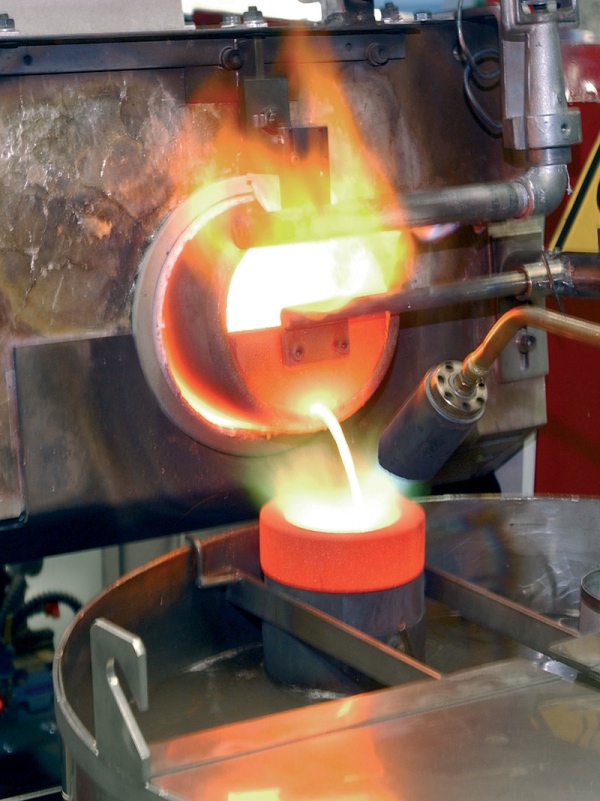
Several times a day the furnace in the foundry smelts a new batch of gold (white/red/yellow) in batches of 2 litres at a time; that may not sound like much, but remember that gold is very dense (which is why it is so heavy) and 2 litres of gold weighs 35kg (around 80lbs). This furnace is currently working almost at full capacity; so a new furnace, more than twice the present volume, will soon be installed in addition to the current one; meaning that Rolex will be able to triple their alloy production.
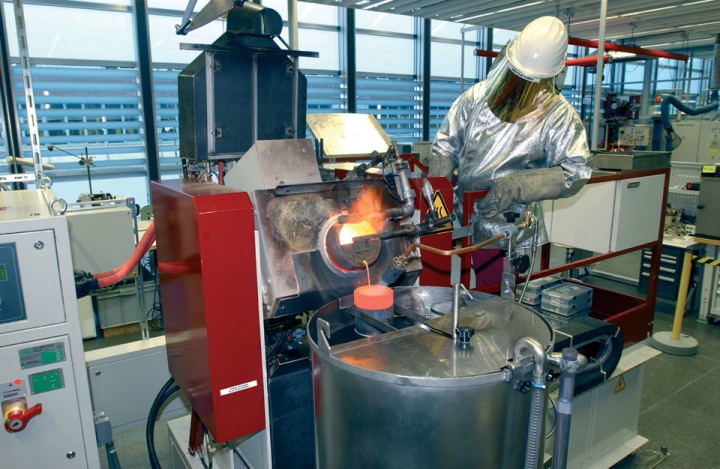
The alloys are then formed into shapes that can be used in case and bracelet making, these are18mm tubes for the bracelets and rectangular bars for the cases. The tubes are fed through extrusion machines multiple times, under a pressure of 250 tons, until their profile is the desired one, then they are subjected to a heat treatment to harden them and then they are cut to the correct size for each link. The amazing thing is that the mirror like surface on the links is the result of the perfect finish on the extrusion die; they are not polished at all after coming out of the machine. It was this fact I found the most amazing, this (to me) is like taking several raw planks of wood, French polishing their surfaces and then building a cabinet from them.
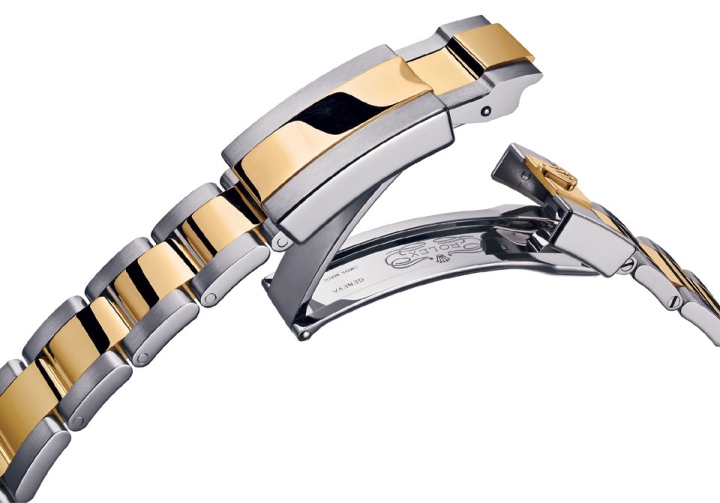
The bracelet clasps are extruded, not stamped and this is why the new bracelets are of much higher quality than in previous days. The new machinery is capable of much higher precision than the old ones, if you think that the bracelets fitted to the Daytona and the new GMT Master II are good; wait until you see the one fitted to the new Sea Dweller Deep Sea. It reminds me of the retractable hard top fitted to the Mercedes-Benz SL & SLK, in the way the boot/trunk opens from either the front or the rear, depending on whether you are lowering the roof or accessing your luggage. In the same way, the bracelet adjusts from both ends depending on whether you want to lengthen it or to access the wet suit links. The simple truth is that Gay Fréres (who under both private and then Rolex ownership had previously made all the bracelets) would never have been capable of such precision engineering.
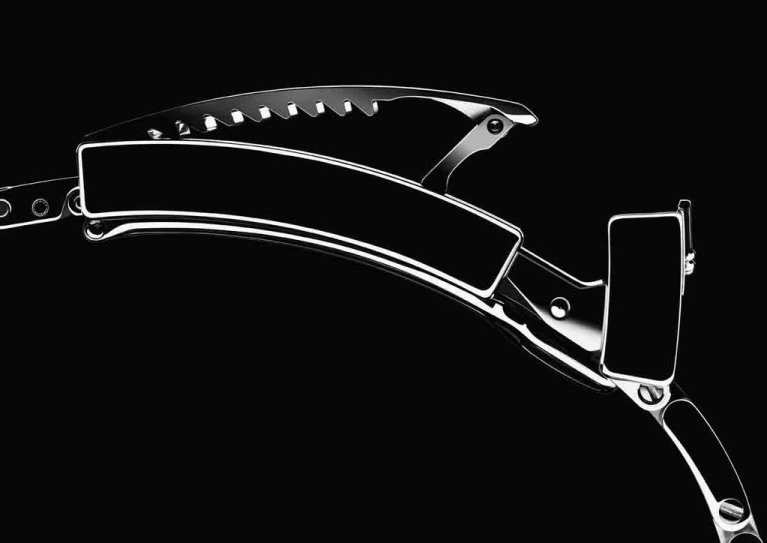
The completed bracelets are subjected to random testing; a sample is taken from a batch, fitted to a watch head weighted to the exact weight of a movement and then the completed ‘watch’ is attached to the arm of a six axis robot over 2m tall. These very expensive machines are normally seen in heavy industries, such as car making, where they perform dirty repetitive tasks such as spot welding or door hanging 24hrs a day. Here the robot is used to simulate a year of wear in only two days, it spins the ‘watch’ through any possible position under high acceleration (much higher than a human would ever do) whilst occasionally slamming the ‘watch’ into a rubber cushioned bench (cushioned to protect the robot, not the watch). The robot can be programmed to perform any kind of contortion desired and due to the noise created by the constant impacts and the velocity at which the arm moves, the whole thing is encased within a giant glass booth.
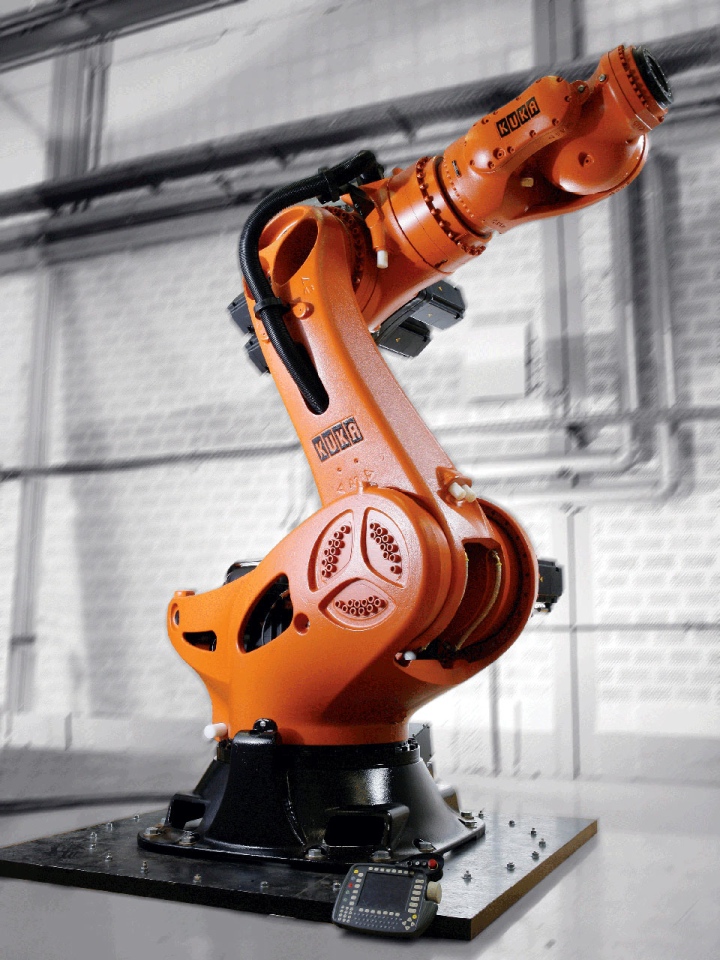
It is often claimed by the company’s critics that Rolex is too staid and unadventurous in its products; yet I think a closer examination would show the opposite. They employ 250+ people in their R&D department, 30 of whom hold doctorates and they register 5 to 8 patents a year for completely new innovations. You may not like the look of the Yachmaster II, but you cannot criticise the technology involved in that movement. Whilst others may decry the lack of ‘finishing’ on their movements, but they were the first company ever to standardise the balance bridge on all their movements, replacing the centuries old balance cock and thereby almost completely eliminating the problems of endshake whilst massively increasing the resistance of the watch to shocks. The truth is that Rolex is a very innovative company; it is just that its innovations are mostly invisible and designed to improve the product gradually. They are not the same old ‘me too’ innovations seen by other companies, such as a new tourbillon or a different way of displaying the time; in other words, Rolex only changes a product when it feels that the change is an improvement, not just a change for change’s sake.
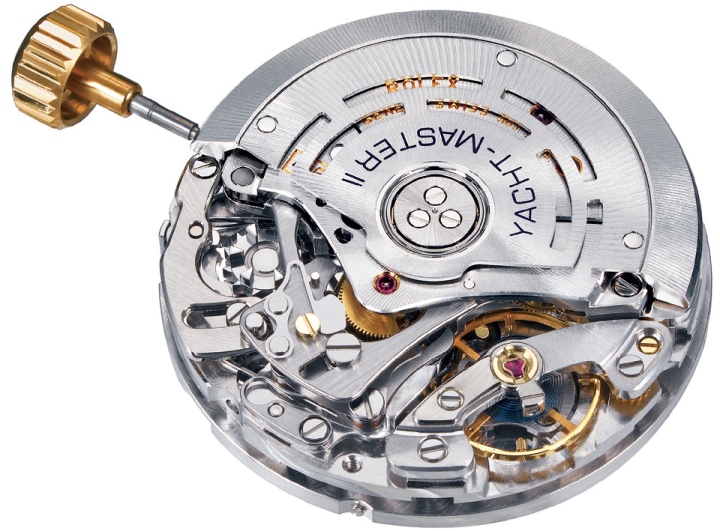
As is now well known, the steel used for cases and bracelets is not the 316L used by 99% of the watch industry. Starting in the late 1980s, Rolex switched over to 904L. Bought from a supplier in Austria, the rest of whose production goes to the petrochemical industry, 904L has a much higher resistance to corrosion than 316L. We have all seen 40-year-old steel watches with case backs and threads pitted from the corrosive mixture of dirt, human perspiration and high humidity. Rolex don’t claim that 904L will never suffer a similar fate, but the formulation of the steel means that it is much less likely during the normal lifetime of a watch.
The new machinery has also meant that the age old method of making an Oyster case has also changed; if you have seen lot 51 in Antiquorum’s recent Revolution sale, you will know the system. A slice is cut through a rectangular bar; this is then formed into a lozenge shape and by several other subsequent processes becomes the Oyster case we know & love. Then a circular disc undergoes similar processes and becomes the caseback. No longer; in a single press the rectangular slice is pushed through a tool & comes out in a rough shape of the case, the circular slug of steel that was previously in the centre of the case is now used to make the case back, meaning that not only are fewer processes needed to make a case, but also less steel is needed, further adding to the company’s ‘Green’ credentials.
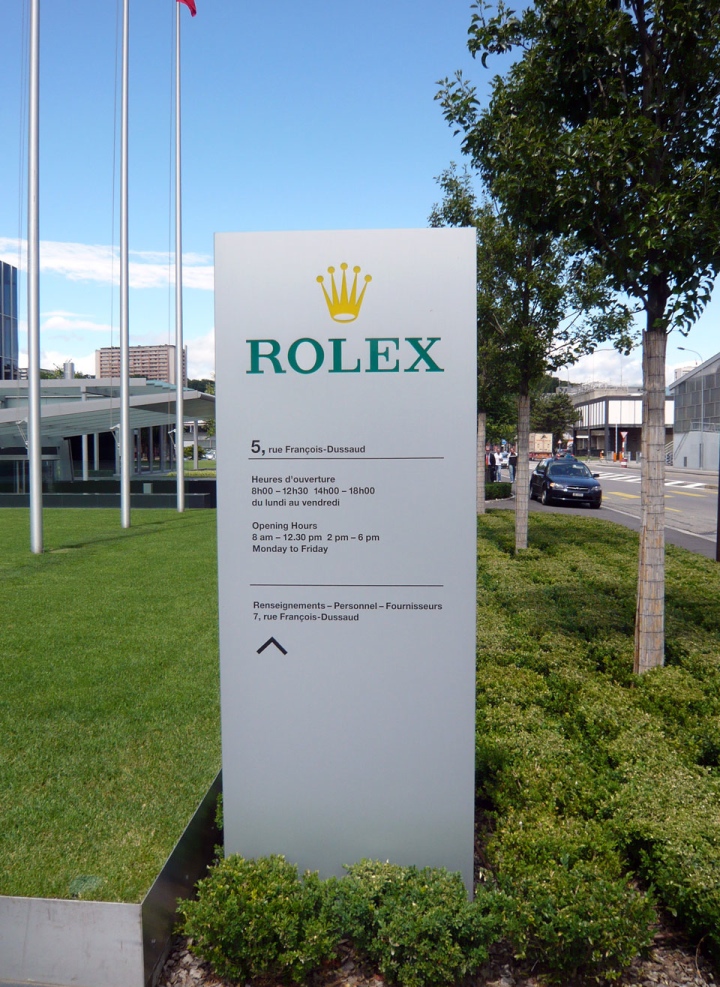







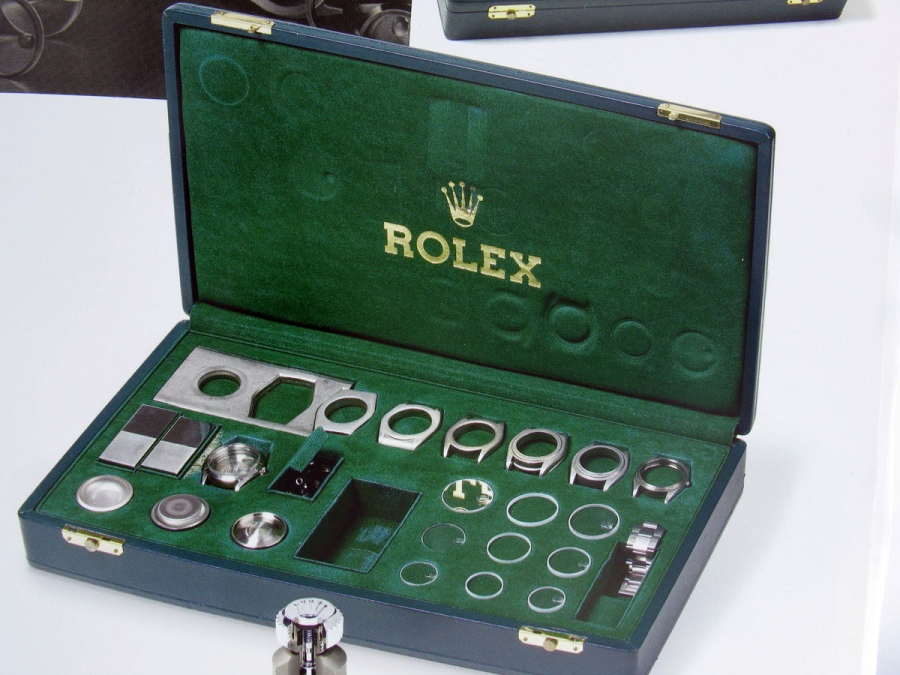
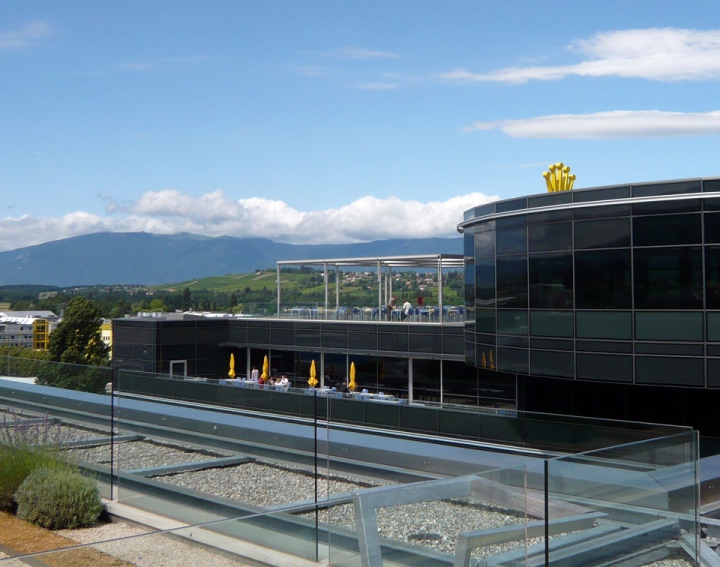
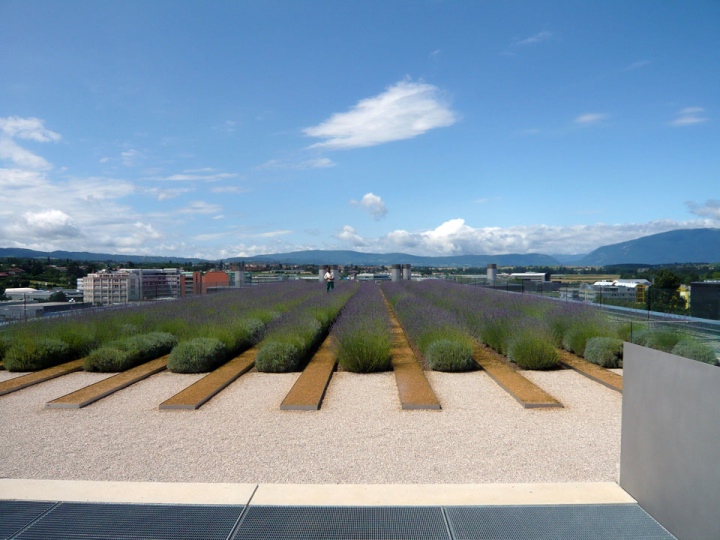
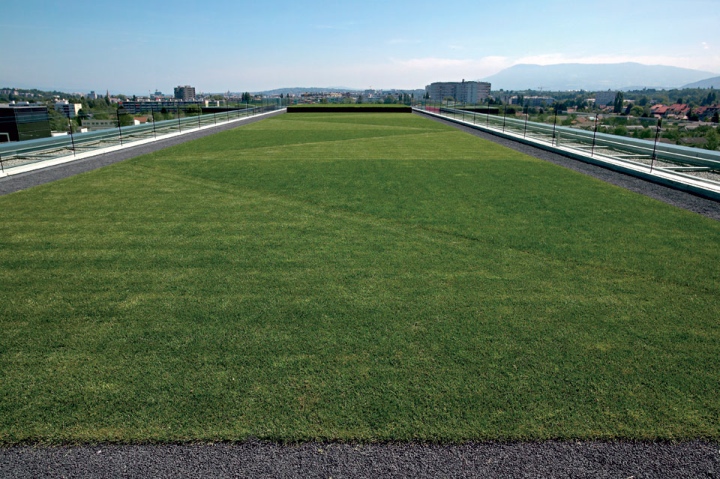
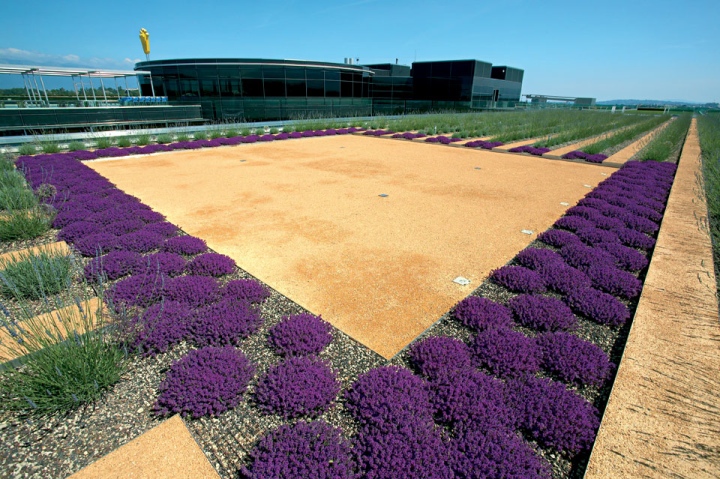
Mr.James Dowling,It is my great pleasure to write comments on this page.I must say that you have posted highly informative things about your visit to Rolex factory.Yes Rolex SA is unparalleled brand in the Swiss Watch World and the immense success behind this brand is the product itself that speaks about its creators.Simply LOVE IT FROM MY DEEP HEART.Greetings!
ReplyDeleteI read that Post and got it fine and informative. Swiss replica watch
ReplyDeleteI am impressed. I don't think Ive met anyone who knows as much about this subject as you do. You are truly well informed and very intelligent. You wrote something that people could understand and made the subject intriguing for everyone. Really, great blog you have got here. Swiss replica watch
ReplyDeleteI read that Post and got it fine and informative. biao.is
ReplyDeleteOmega first introduced the Sea master 300 replica watches in 1957 - it had been a wrist watch designed specifically for divers and experts who labored underwater. Over fifty percent a hundred years later, the watch constitutes a comeback inside a completely upgraded that has been enhanced form, ready for any new generation of outdoorsmen. Here’s single1 replica Omega Sea master 300 Master Co-Axial omega replica watches review, the very best version to date.
ReplyDeleteFake Swiss Rolex Watches
ReplyDeleteReplica Audemar Piguet Watch
Replica Bell and Ross Watches
Fake Breitling Watches
Fake Franck Muller Watches
Thank you for you post and I know a lot about Rolex clone watches.
ReplyDeleteThank you because you have been willing to share information with us. we will always appreciate all you have done here because I know you are very concerned with our. 花蓮賞鯨
ReplyDeletereplica rolex watches
ReplyDeleteRead here to know more about The Best Value For Your Scrap Used Old Car? Sell your scrap car with Sydney Cash For Cars largest privately-owned leading car wreckers, service providers and cash for cars in Sydney.
ReplyDeleteWelcome to Local car buyer, one of the leading Brisbane based companies specializing in buying old, used, junk or scrap cars. We buy all cars and Top prices paid. Guaranteed cash in all QLD suburbs
ReplyDeleteLocal car buyer
The slim design also allowed men to hide it in cuffs and shirt cuffs. In the 21st century, many slim mens watches are no longer as bulky and can be worn with a dressy shirt. If you are curious to know more about thin watches, browse this site.
ReplyDeleteIn a similar vein, it's interesting to consider how the concept of mystery and intrigue also plays a role in our daily lives. Just like the allure of Rolex, certain services, such as free car removal on the Gold Coast, embody an air of mystique. Companies that offer such services often operate discreetly, allowing their reputation and satisfied customers to speak for themselves.
ReplyDeleteThe Omega Seamaster No Time to Die replica is a must-have for Bond fans who want the same sleek and rugged design without the hefty price tag.
ReplyDelete